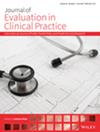Machine Learning and Deep Learning in Detection of Neonatal Seizures: A Systematic Review
Abstract
Background
Neonatal seizures are one of the most prevalent clinical manifestations of neurological conditions, requiring urgent intervention and detection. Machine learning (ML) and Deep Learning (DL) is an emerging promising tool for detecting and managing such conditions.
Purpose
This study aimed to investigate the effect of ML and DL on the detection of neonatal seizures.
Methods
In April 2024, previous studies in English were searched in PubMed, ScienceDirect, Cochrane Library, Google Scholar, and Scopus using the search terms “Neonatal,” “seizure,” “machine learning,” and “detection.” A total of 3512 studies were reviewed due to a non-blinded screening by 2 authors. The scoping review included ten previous studies that met the inclusion criteria.
Results
In this study, the time series of electroencephalogram signals during 1389 seizures with an average of 834 h of a minimum of 17 and a maximum of 258 newborns admitted to the neonatal intensive care unit were reviewed using ML approaches for the mean area under the receiver operating characteristic curve (AUC) in 7 studies, sensitivity and specificity in 4 studies, and both AUC and sensitivity and specificity in 1 study. The AUC for detecting neonatal seizures ranged from 80.7 to 99.3, and sensitivity and specificity ranged between 60.4 and 93.38 on average.
Conclusion
Models derived from convolutional neural networks have high power to detect neonatal seizures early and distinguish patients with and without true seizures. Thus, it is suggested that further ML and DL models for neonatal seizures should be developed, the number of experimental studies should be increased, and the intensive care units should be integrated.

 求助内容:
求助内容: 应助结果提醒方式:
应助结果提醒方式:


